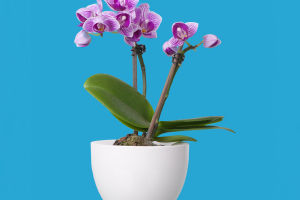Lotus flowers have long fascinated humanity with their ethereal beauty and serene presence, gracing lakes and ponds with their elegant blooms.
This ancient plant holds a rich history of cultivation, thriving in the summer months with its vibrant foliage and delicate fragrance, offering a respite from the sweltering heat.
Unlike terrestrial plants, lotus plants have evolved to thrive in aquatic environments, adapting their physiology to the unique challenges of life in water.
While land-based plants draw nutrients from the soil and respire through the air, prolonged submersion in water would suffocate and rot them. Lotus, however, has developed specialized adaptations that allow it to flourish in watery habitats.
At the heart of the lotus's aquatic success lies its remarkable root system. Lotus roots are equipped with a semi-permeable membrane, allowing for the exchange of gases between the plant and the surrounding water.
This unique feature enables lotus roots to absorb oxygen dissolved in the water, ensuring their respiratory needs are met even when submerged for extended periods.
The lotus plant belongs to the water lily family and spreads through lakes and ponds via its underground stems, known as lotus rhizomes.
These horizontal stems delve into the muddy substrate, anchoring the plant in place while also facilitating nutrient uptake.
Over time, the top nodes of the lotus rhizome burrow deeper into the lakebed during the summer and fall seasons, gradually transforming into the coveted lotus roots cherished for their culinary and medicinal properties.
The lotus's aerial parts emerge from the water's surface, showcasing its iconic leaves and majestic flowers.
Lotus leaves, with their waxy outer layer and nipple-like protrusions, repel sludge and muddy water, ensuring they remain clean and pristine even in murky surroundings.
As lotus leaf and flower buds emerge from the depths, their protective wax coating prevents adherence of debris, while the gentle motion of water waves rinses away any lingering impurities, leaving them to bloom in all their splendor.
The lotus flower, a symbol of purity and enlightenment, holds a treasure trove of benefits beyond its aesthetic appeal. Lotus seeds, revered for their tonic properties, offer a nutritious addition to culinary creations.
Lotus roots, a culinary delicacy, boast both nutritional value and medicinal benefits, while lotus leaves add a fragrant touch to special dishes and find application in traditional medicine for treating various ailments, including hypertension.
The lifecycle of the lotus mirrors the changing seasons, with the onset of summer signaling the rapid germination of lotus seeds in the nutrient-rich silt of lake bottoms.
As summer progresses, lotus flowers bloom in a spectacular display of color and fragrance, attracting admirers from far and wide. With the onset of autumn and cooler temperatures, lotus seeds mature, ready to replenish the cycle of life once again.
The lotus's ability to thrive in water is a testament to nature's ingenuity and resilience.
Its intricate adaptations, from semi-permeable roots to wax-coated leaves, enable it to flourish in aquatic environments, offering beauty, sustenance, and healing to those who appreciate its grace.
The lotus, with its golden miracle of life, continues to enchant and inspire, weaving its magic across waterscapes and hearts alike.


